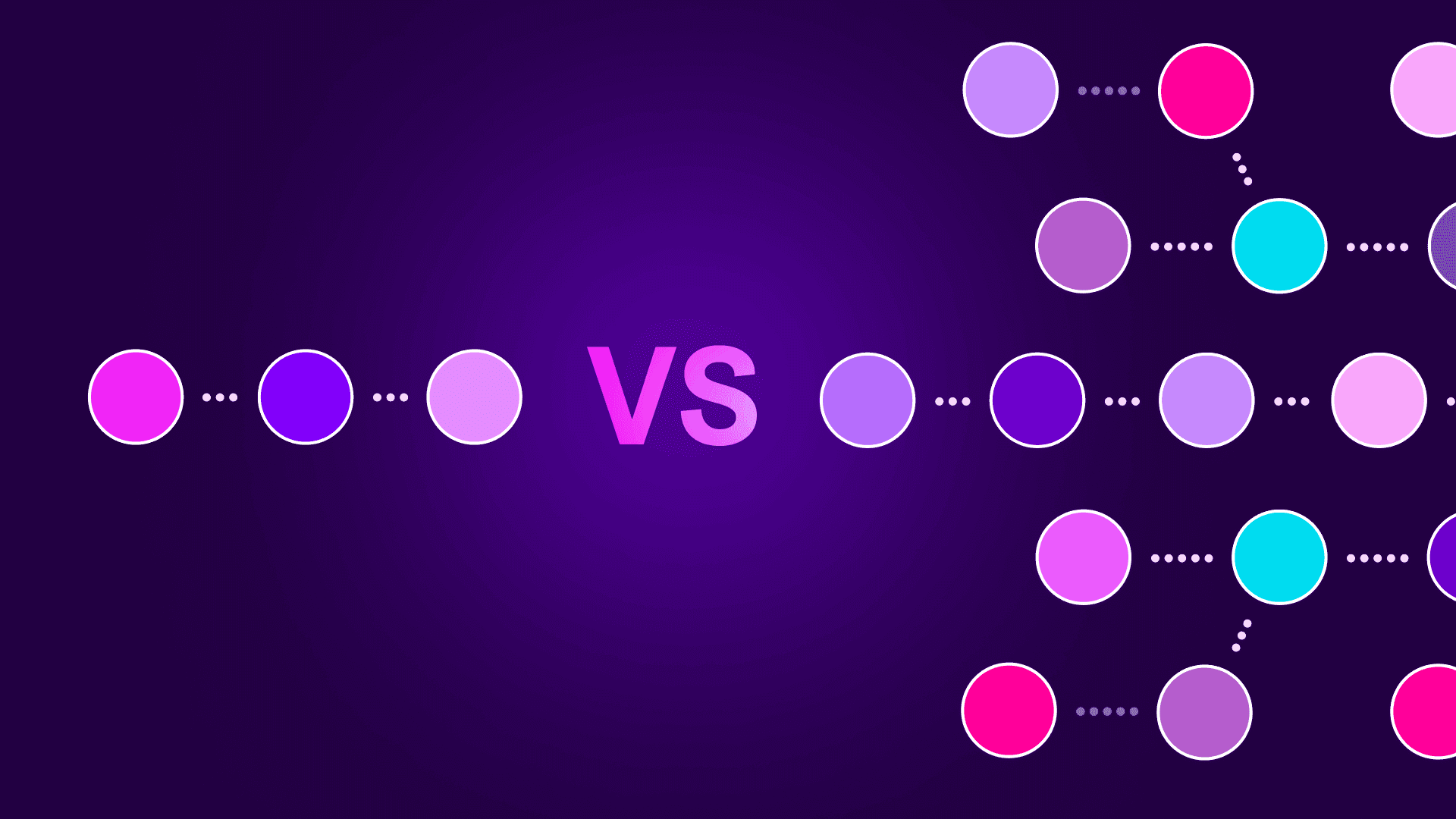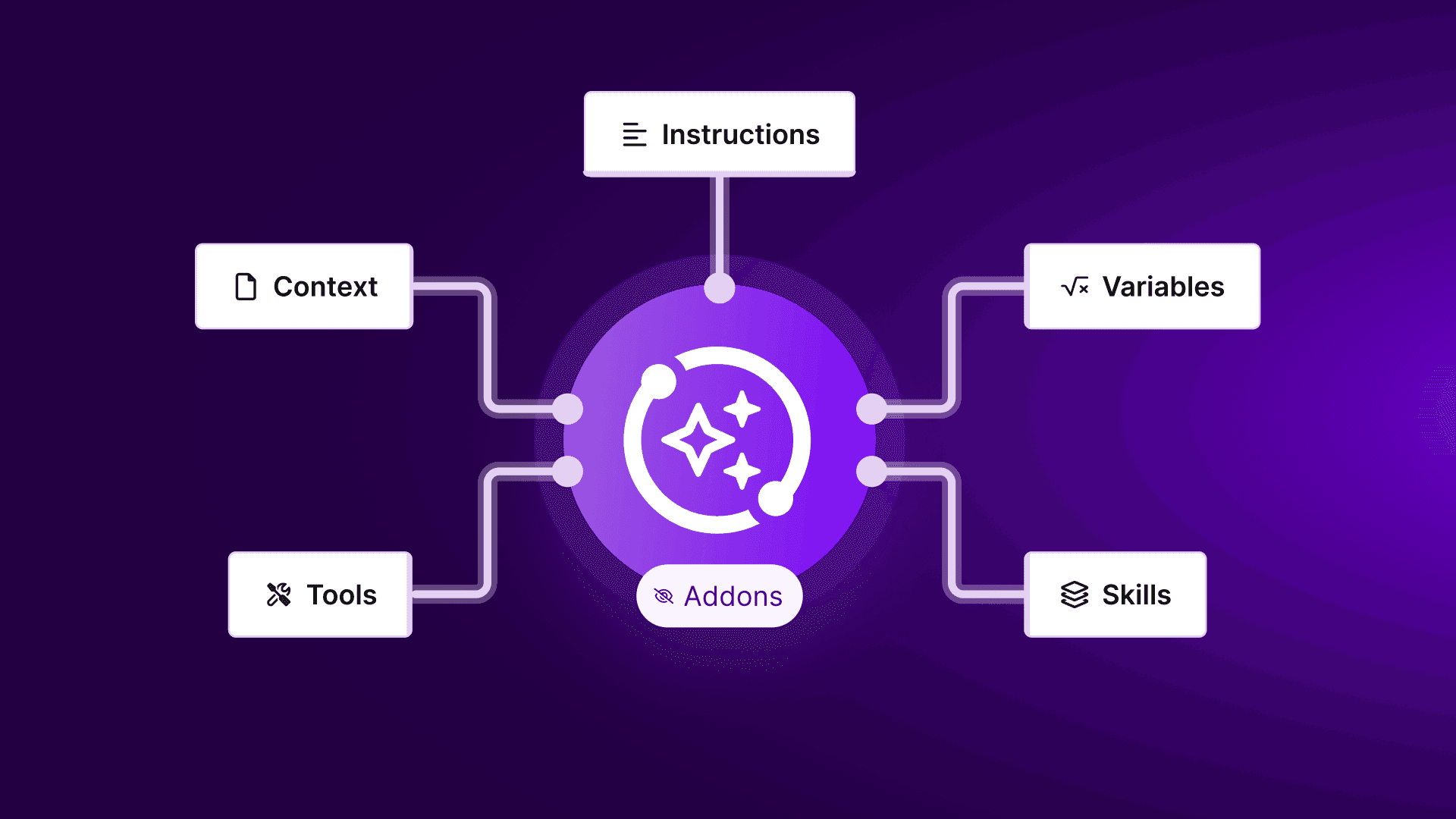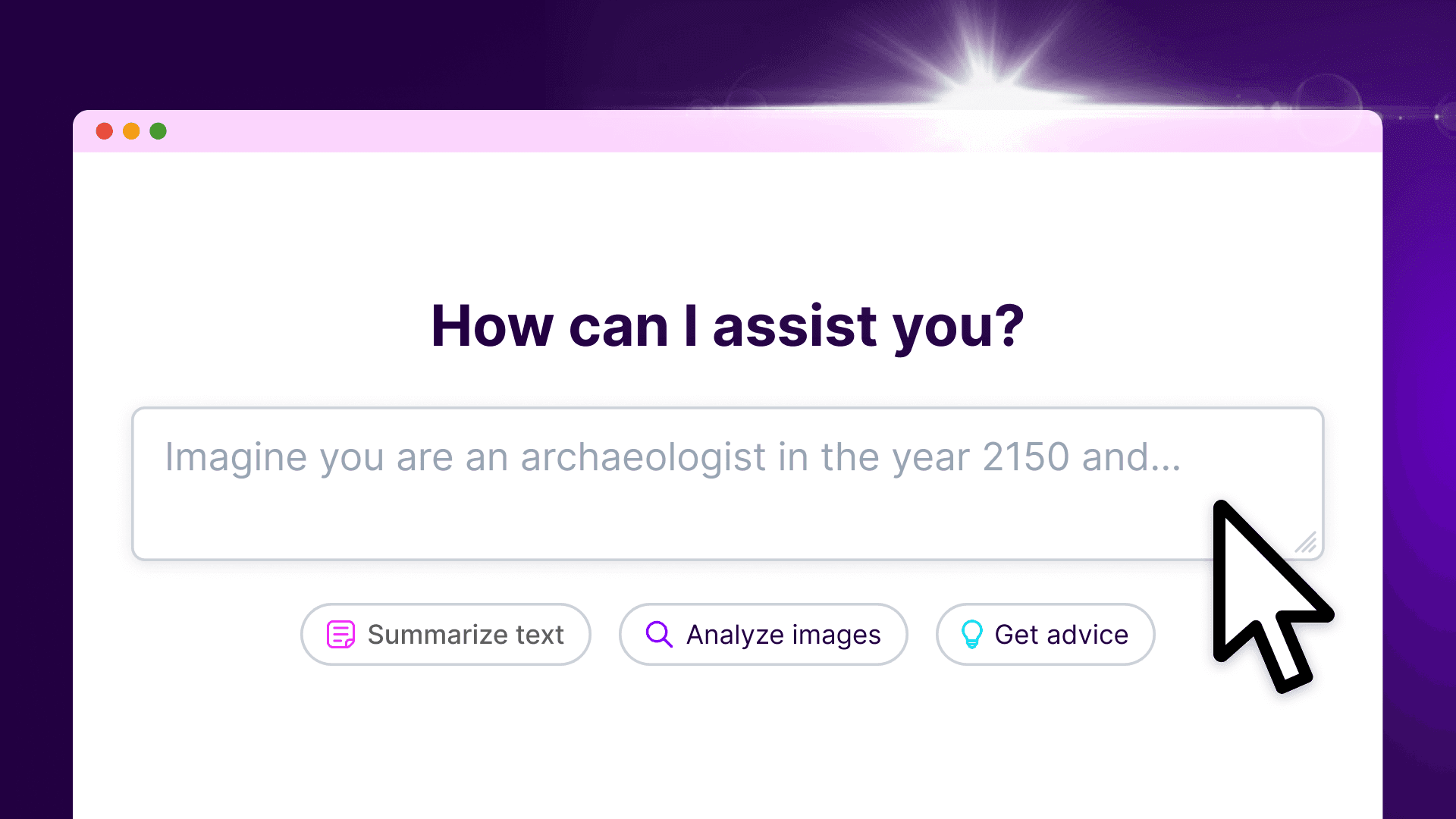Mar 24, 2025 | 7 minutes
The rise of nondeterministic automation: how AI is changing the game

Make users understand the transformative power of automation to streamline workflows. Think of processes like data entry and transaction processing, report generation, or sending out scheduled notifications. This type of automation has been the backbone of many companies, providing consistency and reducing errors. It’s commonly called “deterministic automation”.
However, as business challenges become more complex and dynamic, so must solutions and technology evolve. This is one of the reasons why we’re seeing traditional rule-based automation being augmented by AI-driven nondeterministic automation.
Industry leaders are taking note. Gartner has ranked hyperautomation as a top strategic technology trend for consecutive years, underscoring the push toward more advanced, AI-driven automation solutions.
Similarly, a Harvard Business Review survey found that 80% of executives say adopting automation is “extremely or very important” to their organization’s future success. The message is clear: organizations must embrace deterministic workflows and adaptive, nondeterministic automation powered by AI to stay competitive.
But what exactly is the difference between deterministic automation and nondeterministic automation? And what does this tell us about the increasing role that AI will play in enabling more flexible and intelligent automation solutions - and enabling Make users to embrace this evolution?
Deterministic automation: A powerful foundation
What is deterministic automation?
Deterministic automation is defined by its rule-based nature and predictable outcomes. A deterministic algorithm will consistently produce the same output from the same initial input or state. This predictability is valuable in scenarios where consistency and reliability are paramount.
Examples of deterministic automation
Deterministic automation has a wide range of applications. Some common examples include:
RPA for data entry and transaction processing: Robotic Process Automation (RPA) utilizes deterministic algorithms to handle repetitive functions like data entry and transaction processing, increasing efficiency and reducing manual errors.
Automated email responses: Setting up automated email responses based on specific triggers or keywords is a form of deterministic automation.
Generating invoices from order data: Automating the creation and sending of invoices based on predefined rules and order information is another example of deterministic automation.
The strengths of deterministic automation
Deterministic automation offers several key benefits:
Precision and consistency: The predictable nature of deterministic automation ensures consistent and accurate results, which is crucial for tasks requiring high precision.
Efficiency: By automating repetitive tasks, deterministic automation improves efficiency.
Speed in processing: Deterministic systems can excel due to their straightforward processes.
Expanding automation’s potential
While deterministic automation has been a valuable foundation, modern challenges often demand greater flexibility. Businesses are looking to handle more complex scenarios and make smarter decisions with their automation. This is where the power of AI and nondeterministic automation comes into play.
Inflexible with complexity or change: Deterministic automation struggles to adapt to dynamic or unpredictable situations where predefined rules may not apply. If an input or scenario is unexpected, a deterministic system will often fail to handle it.
For example, a deterministic scenario in Make might use an "if...else" statement to route a customer support ticket based on keywords: "IF the email contains 'billing,' THEN assign to the billing team; ELSE assigns to general support." This rule is rigid; if a billing-related email uses unconventional language, it might be misrouted.
Nondeterministic automation: embracing intelligent flexibility
What is nondeterministic automation?
Nondeterministic automation moves beyond the rigid rules of traditional automation, embracing variability and learning. Unlike deterministic automation, which follows a predefined path to a predictable outcome, nondeterministic automation, often seen in agentic automation, can produce a range of outputs for the same input.
For instance, instead of a simple "yes" or "no" (1 or 0) output, nondeterministic automation might provide a probability score like 0.85, indicating an 85% likelihood of a customer being satisfied.
This flexibility is particularly valuable when dealing with complex, uncertain, or evolving situations. Nondeterministic systems often leverage AI to make decisions and adjust to changing conditions, enabling them to handle a broader range of scenarios.
AI agents making decisions and adapting on the fly: AI-powered agents can be designed to use various tools and make choices to achieve a defined goal. These agents can adapt to different inputs and conditions, making them well-suited for complex workflows and dynamic environments.
The role of AI in nondeterministic automation
AI is instrumental in enabling nondeterministic automation. AI algorithms and agents can analyze data, learn from past experiences, and make context-aware decisions, allowing for dynamic and flexible automation.
Examples of nondeterministic automation
Nondeterministic automation is becoming increasingly common in various applications:
AI-powered chatbots: Chatbots use natural language processing and AI to understand user queries and provide relevant responses. Their ability to interpret language and adapt to different conversation flows is a prime example of nondeterministic automation.
Dynamic pricing optimization: Many e-commerce businesses use AI to adjust product prices in real time. These systems consider factors like demand, competitor pricing, and customer behavior to optimize pricing strategies, leading to varied outcomes.
Smart routing in Make:
In Make, you can move beyond simple "if...else" logic.
Imagine a scenario that uses AI to analyze customer sentiment from survey responses.
Nondeterministic automation could route negative feedback to a high-priority queue, flag urgent issues for immediate attention, and summarize positive feedback for reporting.
This dynamic routing, guided by AI's nuanced data analysis, is a powerful example of nondeterministic automation in Make.
The advantages of nondeterministic automation
Nondeterministic automation offers several advantages:
Flexibility: Nondeterministic systems are designed to handle complex and dynamic situations, adjusting to changing circumstances and unexpected inputs.
Handling complexity: By leveraging AI, nondeterministic automation can address challenges too intricate or unpredictable for traditional rule-based systems.
Enables innovation: Nondeterministic automation can facilitate creative problem-solving and the development of innovative solutions by exploring a broader range of possibilities and outcomes.
Considerations for nondeterministic automation
It's important to acknowledge that nondeterministic automation also presents specific considerations:
Achieving consistency and transparency: Due to the variability in outcomes, ensuring consistency and understanding the decision-making processes of nondeterministic systems can be more complex.
Potential for unexpected outcomes: Because nondeterministic systems make probabilistic decisions, there is always a risk of unforeseen or incorrect results, especially early on.
Data and training requirements: AI-powered automation relies heavily on quality data and thorough training. It requires a significant amount of relevant data to learn effectively.
Controlling nondeterministic behavior with AI prompting techniques
Adopting AI-driven automation doesn’t mean giving up all control. Organizations can steer nondeterministic systems toward more consistent and desirable outcomes using effective AI prompting techniques and other best practices. Here are some strategies to rein in unpredictability:
Set clear instructions and constraints: When interacting with AI (like a large language model), provide explicit and detailed prompts. Specify the format, scope, or criteria for the desired output. The more context and guidance you give, the less room the AI has to wander off course. For example, instruct a generative AI to answer in a structured format or stay within certain content boundaries.
Provide examples (few-shot prompting): One way to guide AI behavior is by showing examples of your desired outcome. By including a couple of example inputs and ideal outputs in your prompt (a technique known as few-shot prompting), you help the AI understand the pattern or style it should follow. It reduces ambiguity and variability in its responses.
Implement guardrails and checks: Surround your AI automation with deterministic checks and balances. For instance, you might set up validation rules to catch AI outputs that don’t meet specific criteria (like format or threshold scores) and handle them via a fallback process or human review. By integrating such guardrails, you ensure that when the AI produces something unexpected, it doesn't cause downstream errors without oversight.
By applying these prompting techniques and safeguards, enterprises can harness the power of nondeterministic AI while maintaining control over outcomes. In practice, this often means a hybrid approach: letting the AI handle complexity and nuance but using clever prompts and fail-safes to keep it aligned with business goals and compliance needs.
Make: Your platform for evolving automation
Make actively incorporates AI to enhance its automation capabilities and provide users with more powerful and intuitive tools. These AI-powered features simplify the automation process, improve efficiency, and enable users to tackle more complex tasks. Make is focused on empowering users with AI to streamline automation.
Make provides AI-powered workflows that help users achieve scalable and adaptable business processes by embedding generative AI into workflows, dynamically adapting to evolving needs to provide faster resolution times and scalable workflow improvements.
Make also provides AI-assisted user experiences to help innovators achieve faster workflow improvements and streamlined operations by simplifying the creation, maintenance, and enhancement of automation solutions directly within the platform, using AI-powered features to accelerate processes, reduce errors, and enable scaling for maximum efficiency.
An ever-evolving landscape
The world of automation is rapidly evolving, driven by the increasing capabilities of AI. Understanding the distinction between deterministic and nondeterministic approaches is becoming crucial for businesses seeking to optimize their operations. By strategically leveraging both approaches, organizations can achieve greater efficiency, improve decision-making, and unlock new possibilities. The most successful automation strategies often combine the two – using deterministic automation where absolute reliability is needed and layering in AI-driven automation to handle exceptions, learn over time, and deal with complexity. This blended strategy is what Gartner refers to as hyperautomation: rapidly automating as many processes as possible by orchestrating multiple technologies together.
Platforms like Make empower businesses to embrace this evolution by providing a unified environment that supports both deterministic and nondeterministic automation. With the right tools, companies can automate the routine and intelligently tackle the complex, staying ahead in today’s fast-paced digital landscape. By evolving your automation approach now, you position your organization to be more agile, innovative, and competitive in the years to come.
Sign up for a free trial with Make and begin automating your processes with AI right away.
Book a demo to learn how Make can unlock your organization’s AI capabilities and help you lead the charge.




